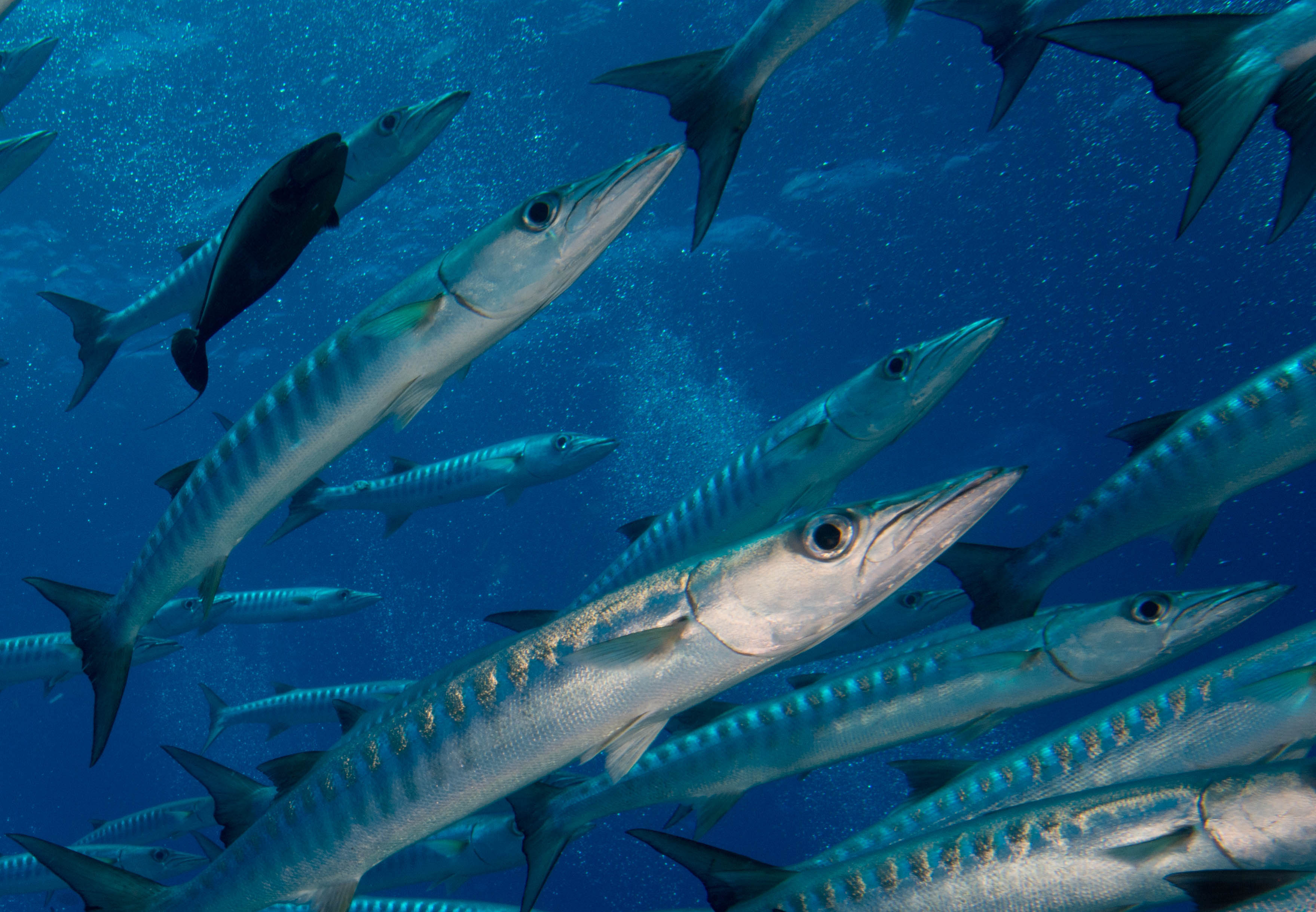The first, the Sphyraena viridensis, is in all respects an “alien”, considering that its area oforigin is the north-eastern Atlantic Ocean, although, in addition to being known as the yellowmouth, it is also known as the Mediterranean Barracuda, the sea in which it has spread only a decade or so, as a result of rising temperatures.
The second, however, the Sphyraena sphyraeana or European Barracuda, also known as the sea pike, is native to the Mediterranean, although it is also widespread in the eastern Atlantic. Both fish belong to the Sphyraenidae family and the Sphyraena genus like the other 24 species of barracuda widespread in the planet’s tropical seas. The native and alien species share several physical and behavioral characteristics, so much so that it is not easy to distinguish them, if you do not know and recognize the few differences.
With a fusiform body of a silvery-blue-gray color and a light, whitish belly, the Mediterranean barracuda has about twenty dark blue bands on its sides, which the European barracuda lacks. Both species have a thin, pointed head; their eyes are large and so is their mouth, with a protruding jaw equipped with sharp teeth. The main difference is in the preoperculum, one of the bones that protect the gills in fish: in the Mediterranean barracuda it is smooth, while in the European barracuda it is scaly.

Other elements of difference between the two species are their size: the “alien” Mediterranean is larger, reaching a length of one and a half meters and a weight of ten kilos; the native European is smaller, reaching a maximum of one meter and not exceeding three kilos.
As for their distribution areas, they are only in some cases overlapping, although both species are pelagic and do not dive to depths greater than one hundred meters. They frequent different habitats, the European is more coastal and more frequent in sandy areas, while the Mediterranean seems to prefer the more open sea and the rocks that it uses to ambush its prey. They are all large and aggressive predators. They eat mainly other fish: the European prefers anchovies and whitebaits, the Mediterranean also feeds on cephalopods and crustaceans.
Barracudas of any species capture their prey using the surprise factor and the ability, linked to their coloration, to blend in with the reflections of the water, in addition to the strength of the group, because they usually hunt in school, always during the day. When they spot their prey or preys, perhaps also in a school, they manage to surprise and overwhelm them thanks to their lightning-fast sprints, aided by the particular shape of their fins and tail. These sprints make the swimming of schools of barracudas particularly spectacular, among the favorite encounters and therefore most sought after by divers. Furthermore, the barracudas present in the Mediterranean are not dangerous for humans.
Famous for their large schools, barracudas live in groups especially when young. As adults, however, they lead a solitary life and are more territorial, except during the breeding season, between spring and summer, when they rejoin the schools. The eggs are released into the sea and the larvae are pelagic. Then, as they grow, the fry and juveniles gather in coastal areas, forming large groups of up to hundreds of individuals.



